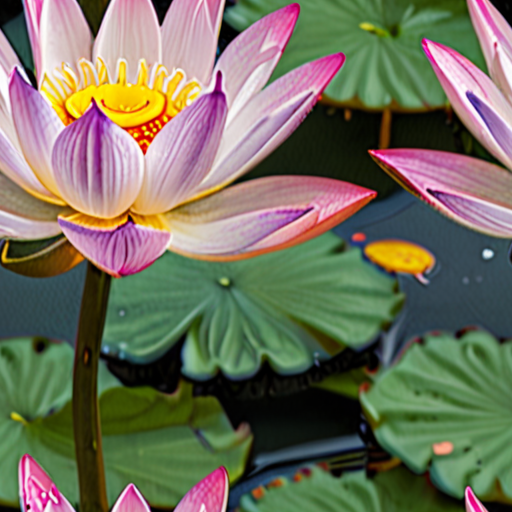“`html
In today’s fast-paced world, finding balance and inner peace can be a challenge. However, engaging in best mindfulness practices can offer a path to greater mental clarity and emotional resilience. This article delves into the essentials of mindfulness techniques, guiding you through the 5 R’s, 4 Ts, and 5 basics of mindfulness, among other key concepts. Discover how to seamlessly incorporate mindfulness into your daily routine with best meditation apps and guidance on mindfulness exercises. Whether you are seeking mindfulness activities for students, mindfulness exercises for groups, or strategies to practice mindfulness for anxiety, this comprehensive guide is your source for the best mindfulness books, best guided meditations, and top mindfulness apps. Join us on a journey to mindful exercise and explore how these practices can transform your approach to life, work, and personal growth.
“`
The 5 Rs of Mindfulness
Mindfulness is a powerful tool for cultivating awareness, reducing stress, and increasing overall well-being.
- Relaxation: The first R of mindfulness is relaxation, which involves letting go of tension and allowing the body to release physical and emotional strain.
- Resilience: Resilience is the second R, which enables individuals to bounce back from adversity and navigate challenging situations with greater ease.
- Responsibility: Taking responsibility for our thoughts, emotions, and actions is the third R, promoting accountability and self-awareness.
- Renewal: Renewal is the fourth R, which involves embracing change and finding opportunities for growth and transformation.
- Reflection: Reflection is the fifth and final R, which encourages individuals to examine their experiences, learn from mistakes, and integrate new insights into daily life.
By incorporating these five Rs into our mindfulness practice, we can cultivate a deeper sense of awareness, compassion, and wisdom, leading to greater peace, happiness, and fulfillment in our lives.
The 4 Ts of Mindfulness
Mindfulness is a powerful tool for cultivating awareness, reducing stress, and increasing overall well-being.
- Tenacity : Developing a consistent practice of mindfulness requires tenacity and dedication. By committing to regular meditation and mindful activities, individuals can strengthen their ability to stay present and focused.
- Timing : Understanding the optimal timing for mindfulness practice is crucial. Research suggests that morning practice can set a positive tone for the day, while evening practice can help unwind and prepare for sleep.
- Tolerance : Cultivating tolerance for difficult emotions and thoughts is essential for effective mindfulness practice. By acknowledging and accepting challenging experiences, individuals can develop greater emotional resilience and compassion.
- Training : Regular training in mindfulness techniques, such as meditation and deep breathing, can help individuals develop greater awareness and control over their thoughts and emotions.
By incorporating these four Ts into daily life, individuals can deepen their understanding of mindfulness and cultivate a more compassionate, aware, and resilient mindset.

The Basics of Mindfulness
Mindfulness is the practice of being present in the moment, paying attention to your thoughts, feelings, and sensations without judgment.
-
Focus on the Breath
One of the most basic principles of mindfulness is focusing on the breath. By bringing your attention to the sensation of the breath moving in and out of the body, you can cultivate a sense of calm and clarity.
-
Be Present in the Moment
Mindfulness is about being fully engaged in the present moment, rather than dwelling on the past or worrying about the future. By letting go of distractions and focusing on what’s happening now, you can tap into a deeper sense of awareness and connection.
-
Practice Non-Judgment
Mindfulness involves observing your experiences without judgment, allowing yourself to simply notice whatever arises without trying to change it or react to it. This helps to reduce stress and increase feelings of acceptance and compassion.
-
Cultivate Awareness of Thoughts and Emotions
Mindfulness involves developing greater awareness of your thoughts and emotions, recognizing patterns and habits that may be holding you back, and learning to approach challenging situations with greater ease and confidence.
-
Develop Self-Compassion
Mindfulness is not just about cultivating awareness, but also about treating yourself with kindness and compassion. By practicing self-care and self-acceptance, you can develop a more positive and supportive relationship with yourself.
By incorporating these five basics of mindfulness into your daily life, you can experience greater peace, clarity, and fulfillment, and live a more authentic and meaningful life.

The 3 Rs of Mindfulness
Mindfulness is a powerful tool for cultivating awareness, reducing stress, and increasing overall well-being.
-
Recognize
The first step in mindfulness is to recognize our thoughts, emotions, and physical sensations without judgment or attachment.
This involves paying attention to the present moment, observing our experiences without trying to change them.
By recognizing our experiences, we can begin to understand ourselves and the world around us more clearly.
-
Refrain
Once we have recognized our experiences, the next step is to refrain from acting on them impulsively.
This means taking a pause before reacting to a situation, allowing us to choose how we respond rather than simply reacting.
By refraining from impulsive behavior, we can reduce stress and increase our sense of control and calm.
-
Relax
The final step in mindfulness is to relax and let go of tension and stress.
This involves releasing physical and emotional tension, allowing ourselves to feel calm and centered.
By relaxing, we can reduce our stress levels, improve our mood, and increase our overall sense of well-being.
Remember, mindfulness is an ongoing process that requires practice and patience.
By incorporating these three Rs into our daily lives, we can cultivate greater awareness, reduce stress, and increase our overall sense of well-being.
So take a deep breath, recognize your experiences, refrain from impulsive behavior, and relax – you got this!
The 3 3 3 Rule in Mindfulness
The 3 3 3 rule is a simple yet effective mindfulness technique that helps individuals calm their minds and focus on the present moment.
- See Three Things: Take a moment to observe your surroundings and identify three things you can see around you. These could be objects, people, or even patterns on the wall.
- Hear Three Sounds: Listen carefully to the sounds around you and identify three distinct noises. This could be the hum of a machine, the chirping of birds, or the sound of traffic outside.
- Move Three Body Parts: Bring awareness to your physical body and move three different parts. This could be wiggling your toes, stretching your arms, or tilting your head from side to side.
This exercise helps to ground you in the present moment and distract you from anxious thoughts. By focusing on your senses and physical body, you can calm your mind and regain control over your emotions.
Benefits of the 3 3 3 Rule
- Reduces Anxiety: The 3 3 3 rule is an excellent tool for managing anxiety and stress. By shifting your focus away from worrisome thoughts, you can calm your nervous system and feel more centered.
- Improves Focus: This technique helps you develop greater awareness of your surroundings and improves your ability to concentrate. Regular practice can enhance your cognitive function and boost productivity.
- Enhances Self-Awareness: The 3 3 3 rule promotes self-awareness by helping you tune into your physical sensations and emotional state. This increased awareness enables you to better understand yourself and make positive changes in your life.
Practicing the 3 3 3 Rule
To incorporate the 3 3 3 rule into your daily routine, try setting aside a few minutes each day to practice this exercise. Find a quiet and comfortable space, close your eyes, and begin by seeing three things around you. Then, listen for three distinct sounds, and finally, move three different body parts. Repeat this process regularly to experience the benefits of this powerful mindfulness technique.

The 7 Cs of Mindfulness
Mindfulness is a powerful tool for cultivating awareness, compassion, and clarity in our daily lives.
-
Competence
Developing a sense of competence helps us feel confident in our abilities and builds trust in ourselves.
-
Confidence
Confidence is essential for taking risks, trying new things, and pushing beyond our comfort zones.
-
Character
Cultivating strong character traits like empathy, kindness, and integrity helps us navigate life’s challenges with ease.
-
Caring
Practicing care and compassion towards ourselves and others fosters deep connections and meaningful relationships.
-
Connection
Nurturing connections with others helps us feel seen, heard, and valued, leading to a greater sense of belonging.
-
Contribution
Making a positive impact in the world through our actions and contributions gives us a sense of purpose and fulfillment.
-
Creativity
Embracing our creative potential allows us to express ourselves authentically, find innovative solutions, and bring new ideas to life.
By incorporating these 7 Cs into our mindfulness practice, we can cultivate a deeper understanding of ourselves and the world around us, leading to a more compassionate, connected, and fulfilling life.
Conclusion:
By embracing the 7 Cs of mindfulness, we can unlock our full potential, cultivate meaningful relationships, and live a more authentic, purpose-driven life.

0 Comments